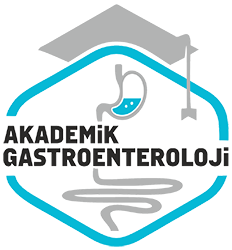Kronik karaciğer hastalığında QT intervalindeki degisıklıkler
QT Interval dispersion in patients with chronic liver diseases
Özet
Giriş ve amaç: Sirozda QT araliginin uzamasi rastlanilan bir bulgu olup, kötü prognozu gösterir. Bu çalışmada karaciger sirozu ile hastalığın etyolojisi ve evreleri ile QT dispersiyonu arasında ilişki bulunup, bulunmadıgini araştırmayı amaçladık. Gereç ve yöntem: çalışmaya siroz tanısı konan 45 hasta alındı. Elektrokardiyografide her hastanın QT dispersiyonu hesaplandi. Elde edilen sonuçlar benzer yaş ve cinste 20 sağlıklı bireyin sonuçları ile karsilastirildi. Bulgular: Hastalarda ortalama QT değeri 47.5±13.5 ms iken kontrol gurubunda 31.0±9.1 ms bulundu, aradaki fark anlamli idi (p<0.01). Sirozlularda child A gurubunda QTd=35.8±12.4 ms child B gurubunda 45.4±13.4 ms ve child C gurubunda 55.0±11.0 ms bulundu. Sonuç: Sirozlu olgularda QTd prognostik bir indikatör olarak kabul edilebilir.
Abstract
Background and aim: QT prolongation is encountered quite frequently in cirrhosis patients and is an indicator of poor prognosis. The aim of this study was to evaluate the relationship between chronic liver disease (etiology and Child-Pugh score) and QT pattern. Materials and methods: Fourty five patients with cirrhosis were included in the study. The QT pattern was calculated on ECG for each patient and control subject. The control group consisted of 20 age and sex matched healthy subjects. The results were compared by student’s t test. Results: Mean QT was 47.5±13.5 ms for patients and 31.0±9.1 ms for controls, thus there was a signifi-cant difference between the groups (p<0.01). The QTd was 35.8±12.4 ms in child A, 45.4±13.4 ms in Child B and 55.0±11.0 ms in Child C. Conclusions: QTd can be accepted as a prognostic indicator in cirrhotic patients.



